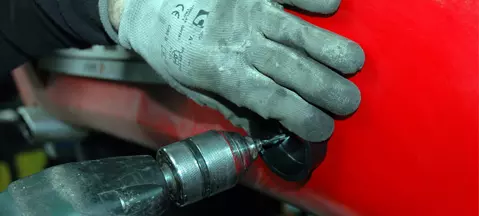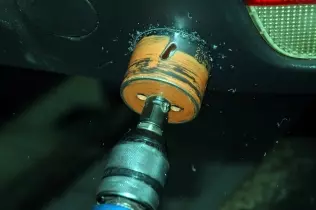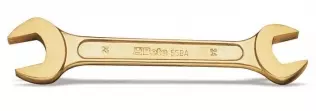- Main page
- Search
- Up to date
- Products
- Technology
- Vehicles
- Video
- Conversion Payback Simulator
Port Injection - Conversion Payback Simulator
Direct Injection - Conversion Payback Simulator
Diesel - Newsletter
Tools - what are they made of?
 loading results...
loading results...
 © GearWrenchWho said wrenches must be flat? Rotation of the handle part makes the tool more durable and functional
© GearWrenchWho said wrenches must be flat? Rotation of the handle part makes the tool more durable and functionalTools are generally made of durable tool steel (typically alloys including chromium and vanadium), characterised by high abrasion resistance. Vanadium is particularly important, as it is directly involved in the forming of very enduring carbides ensuring proper hardness of material. As for chromium, it affects (in the positive sense) hardening (by improving hardenability and hardening depth), limiting deformations resulting from the process. Chromium is also crucial for preventing steel from breaking, thus improving work safety.
Heat & chemical processing
As said before, hand tools are hardened (abruptly cooled in oil) to improve their durability properties (hardness). Deformation resistance largely depends on this process, which is especially important with such tools as wrenches. Hardness means wrenches can transfer and withstand maximum stress of material when screw joints are loosened or tightened.
Hand wrenches
These are made in the process of plastic working, specifically drop stamping. It requires forging hammers, consisting of anvil block (base) and beater. Both parts of the hammer include stamps, which upon impact of the beater on the block forge a wrench out of a properly heated flat bar. Wrenches produced this way are characterised by repetitious physical and structural features, including favourable (from the point of view of mechanical stress) fibre distribution. Drop stamping is a very precise process, requiring hardly any mechanical post-processing (apart from flash removal). Before the tool is ultimately ready, its sharp edges need to be made blunt and stamping/hardening leftovers are removed. The latter is done through barreling – wrenches are placed in a rotating barrel (sometimes with the addition of an abrasive) and are cleared by chafing against each other. Finally, wrench jaws are adjusted for size with a pull broach.
Holesaws
Holesaws used in the process of converting vehicles to run on autogas (for making ventilation holes for tank fittings and holes where filling valves are mounted) are made from two types of materials. The body is made of tool steel, whereas the toothed ring – of high-speed steel, often including a few per cent of cobalt for extra durability and endurance, especially in high temperatures.
Non-scintillating tools
Non-scintillating tools are a whole different category. They must be made of non-iron-based materials, for they are used in those branches of industry which deal with dangerous (flammable or explosive) agents and must comply with strict safety rules. Such tools may sometimes prove useful or even inevitable for autogas system installers.
The very idea of non-scintillating tools is to make them of material characterised by as low hardness as possible in relation to the hardness of the material the tools are going to be applied to. On the second hand, certain durability must be maintained, so certain compromise is required.
Copper-based alloys are used for manufacturing non-scintillating tools, among them copper/beryl alloys inluding minor amounts of cobalt, nickel and iron. The content of all the additional ingredients (including beryl) is usually below 5 per cent, the remaining 95 per cent being pure copper. Alloys containing 80 per cent copper, 10 per cent aluminium and certain amounts of iron, nickel and manganese are sometimes used, too.
The materials used for non-scintillating tools determine their prices, which are typically several times higher than those of comparable steel tools.
In general
It is vital that tools be precisely selected to match the installer's needs. Proper choice of tools and their quality makes work easier and allows the tools to be used for longer. When making your choices, you may trust renowned brands, but remember that cheaper products can sometimes match the more expensive ones in terms of quality and durability. Relying on opinions of others may prove most effective.
 loading results...
loading results...






